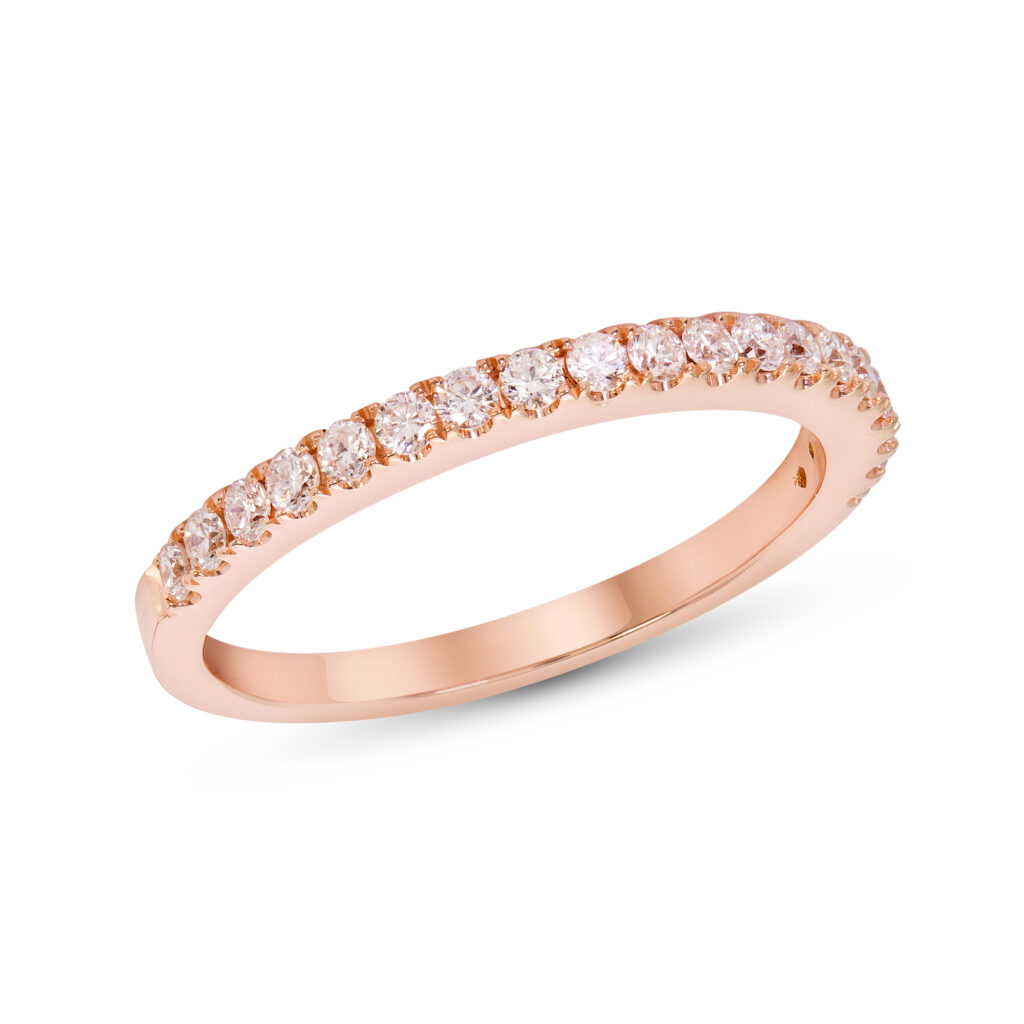Rose gold is a remarkable and attractive alternative to traditional yellow or white gold, but does the nature of its composition mean it’s vulnerable to tarnishing?
When rose gold is of a high quality, it will not tarnish, thanks to the copper and silver alloys mixed in with the gold itself. It can change color, but this isn’t considered tarnishing or degradation, and it can contribute to the increased charm of the item.

Read on to learn more about rose gold, why it’s so popular, and how to take care of it.
There’s Rose Gold in Them Hills!
Rose gold cannot be found in the same natural way that yellow – or traditional – gold is. In fact, the only ‘pure’ gold (and even then it isn’t 100% pure) is yellow gold; white and rose gold is man-made from a range of materials.
For example, to achieve white gold, a mix of silvery or white metals, such as nickel or palladium, is mixed with traditional yellow gold. Then, a rhodium coating is applied to give the white gold a lasting, beautiful gleam.
This process is called ‘alloying’, and it involves melting together two or more types of metal to form one final product. When you turn to rose gold, it’s created through the same process, only this time, copper and silver are mixed with gold to create the desired effect.
Although it might seem like a relatively simple concept, rose gold is a considerably young invention. It was first created in the early decades of the 19th century by legendary jeweler Carl Faberge.
If his name sounds familiar, it’s because it is – he’s the iconic creator of the world-famous Faberge eggs, remarkable and luxurious jewel-studded treasures. When Faberge originally created rose gold, he named it ‘Russian Gold’.
As you could probably imagine, when this material left Russia and gained popularity in the United States, the name changed. Owing to the time, there were obvious issues calling it Russian Gold, and the name ‘rose gold’ became a household term through the 1920s and onwards.
Creating a Lasting Impression
In the mid-twentieth century, rose gold exploded in popularity because of one company – Cartier. Like Faberge, Cartier was a legendary jeweler, and through a great vision, it created the Cartier Trinity Ring.
This ring consisted of three individual bands ingeniously interwoven, each one made of a different type of gold. One band was traditional yellow gold, one band was timeless white gold, and the final band was composed of rose gold.
As time went on, rose gold became more popular for a range of reasons, the first being that it was different – and people loved that. It made a nice change from the binary choice of yellow or white, and it came with a few more benefits besides.
The most important advantage of rose gold is that it just doesn’t tarnish – the alloyed metals within the gold give it lasting durability. While yellow gold (or ‘pure’ gold) will tarnish, the mix of metals within rose – and white – gold ensure it remains resilient.
Take Care of Your Gold
As you might expect, rose gold jewelry should be cared for in a similar way to any item of jewelry. Firstly, avoid working with your hands while wearing the ring, and if you’re using cleaning products or harsh chemicals, protect your hands, or remove the ring entirely.
Although rose gold doesn’t tarnish, it is still susceptible to damage from impact, gouging, scratches, and, in extreme circumstances, crushing. It’s a great piece of advice to simply take care when you’re wearing or storing the ring, and use common sense.
If you’re wearing a piece of rose gold jewelry regularly – say, on a daily basis – you’ll need to step up the maintenance. The best way to do this is with a dry polishing cloth, backed up by a deeper cleaning process once every few months.
When you’re cleaning jewelry made from rose gold, the easiest products to use are vinegar or a mild soap and water mixture. Ultimately, if you want the best clean possible, or your rose gold jewelry is looking a little worse for wear, take it to a professional jeweler.
These establishments will have devices constructed for the sole purpose of cleaning your jewelry. While rose gold won’t tarnish over time, it can become darker through a natural aging process – don’t worry about this, only worry about dirt and damage.
